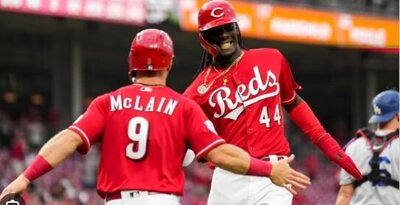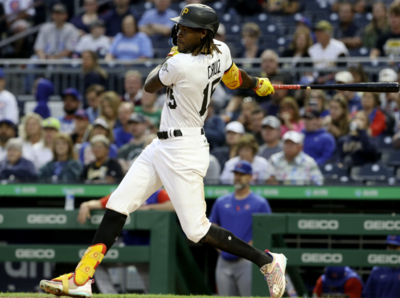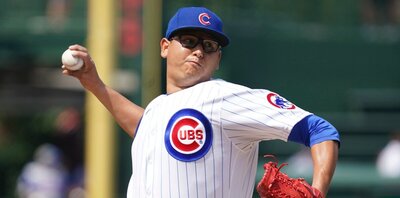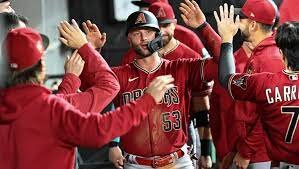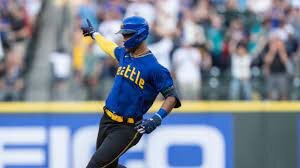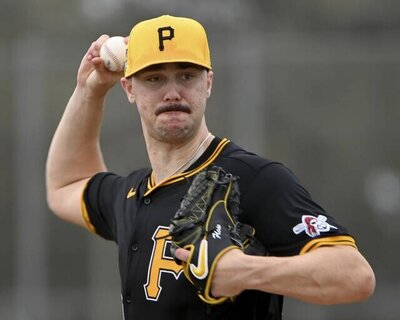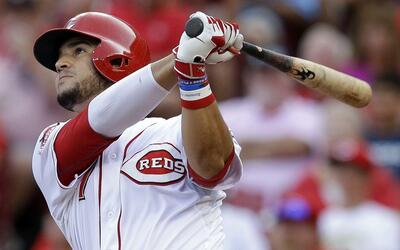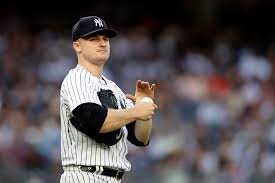Chris Young (SP-NYM)- Young made his first start of the season and earned a no decision against the Nationals. He allowed three runs (two earned) on six hits and one walk while striking out two in five innings of work. When healthy, Young can be a reliable starting option because of his ability to induce weak fly balls. His velocity was down even compared to last season, as he averaged 83.8 mph on his fastball in his Tuesday start. I expect Young to have a strikeout below his career rate of 7.83 K/9. He only recorded a 5.3 percent swinging strike rate, but there might be an increase in velocity once Young gets more innings under his belt. I wouldn't use a roster spot yet because of Young's injury history, but owners in daily leagues shouldn't hesitate to use the veteran, though I would stay away from him in his start against the Yankees on Sunday.
Chad Billingsley (SP-LAD)- Billingsley improved his record to 3-4 after holding the struggling Phillies lineup to one run on six hits and one walk in seven innings of work. He struck out three and lowered his ERA to 3.80. While Billingsley has been inconsistent over the first two months of the season, I believe he is a known entity for this season. His 3.77 FIP and 3.84 xFIP are similar to his ERA and his career averages. There might be peaks and valleys during the season, but Billingsley should finish with a 3.75-3.90 ERA for the season, and his strikeout rate has improved to 8.26 K/9 with a higher swinging strike rate of 9 percent. His batted ball rates for the season are in line with his career rates, and his walk rate of 3.41 BB/9 is also similar to previous seasons. It looks as if Billingsley could get on one of his rolls, so owners should continue to give him the go ahead.
Logan Morrison (LF/1B-MIA)- Morrison went hitless in four at-bats against Tim Hudson and the Braves on Tuesday night, and saw his slash line drop to .225/.319/.344 to go along with his four home runs and 15 RBI. Despite improving his strikeout rate to a career low 15.7 percent strikeout rate and similar batted ball rates, Morrison has seen a steep decline in his batting average. His .248 BABIP should improve, but the steep decline in power is a concern. His ISO has dropped from .221 to .119 and his HR/FB ratio has dropped from 18.1 to 8.7 percent. In terms of power, it looks as if the Marlins' new stadium has been somewhat of a factor. Morrison has a 6.7 percent HR/FB ratio at home as opposed to an 11.8 percent ratio on the road. Despite that fact owners looking for a solid buy low candidate for the second half of the season should consider Morrison even if his power does not return to its 2011 levels.
Justin Maxwell (OF-HOU)- Maxwell went 2-for-4 with a home run, two RBI and two strikeouts in the Astros 9-8 victory over the Cardinals. Maxwell now has a .250/.341/.487 slash line and five home runs in just 88 plate appearances, and he should see more playing time over the course of the season in all three outfield spots for the Astros. With JD Martinez, Brian Bogusevic and Fernando Marinez struggling at the corners, Maxwell has been one of the club's more reliable hitters with a 120 wRC+ and .237 ISO in addition to being an above average defender in all the spots in the outfield. Maxwell as a career 17.9 percent HR/FB ratio in 348 plate appearances, and he has the potential to produce 20 home runs if he received the requisite amount of playing time. His 32.2 percent career strikeout rate is a problem, and will keep him from hitting over .250. However, his power and his ability to produce double-digit stolen bases should provide value in deep leagues.
Huston Street (RP-SD)- Street, who was dealing with a strained lat muscle, was activated from the disabled list on Tuesday. While he did not pitch in save situation on Tuesday night, he will assume the closer from Dale Thayer. Street did earn the win after pitching a scoreless ninth even though he allowed two hits and a walk in the appearance. He did strikeout a batter, and his ERA now sits at 0.84 for the season. Street averaged 88 mph on his fastball last night, and his 89 mph average for the season is the lowest of his career. Despite the drop in velocity, Street's 14.6 percent swinging strike rate is the second best of his career and the quality of his slider and change-up should allow Street to remain one of the better closers in the National League if he can stay healthy.
Follow us on Twitter all year: @Fantistics and @enehsy

